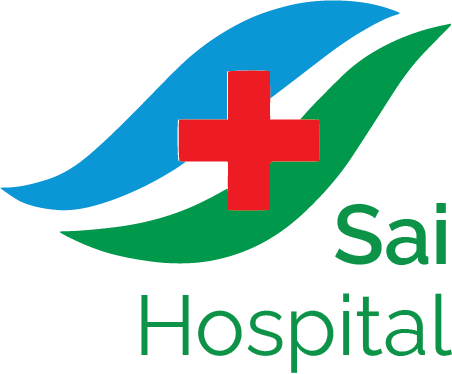How to Read Ultrasound Report | Health in Haldwani

Heart care isn’t what it used to be. Years ago, any chest pain would send people straight into the fear of open-heart surgery. But today, things have changed. At Sai Hospital, Haldwani, we often meet patients with heart symptoms who ask, “Doctor, is there a way to treat this without full surgery?” “Is there a faster, safer option if something is blocked?” “What is interventional cardiology – I heard this term on TV…”
If you’ve heard the phrase but don’t quite know what it means, you are not alone. This blog will walk you through exactly what is interventional cardiology, especially in a town like Haldwani, where cardiac care is evolving rapidly. Let’s break it down, simply and clearly.
What is Interventional Cardiology?
In simple words, interventional cardiology is a non-surgical way of treating heart problems using tiny tubes, wires, balloons, or stents that go inside the blood vessels. There’s no large chest incision, no cutting through the ribs, and recovery is faster. These procedures are done through a small puncture in the wrist or groin, using advanced imaging to guide tools to the heart. The patient is often awake or under mild sedation. So, if you are wondering what is interventional cardiology, think of it as keyhole therapy for the heart. Less pain. Less risk. Quicker healing.
What Can Be Treated with Interventional Cardiology?
You’d be surprised how many serious heart conditions can now be treated without open-heart surgery. Some of the common ones include –
Blocked Heart Arteries (Coronary Artery Disease)
The most common reason people come to Sai Hospital. Blocked arteries reduce blood supply to the heart and can cause angina (chest pain), breathlessness, or even heart attacks.
Treatment – Angioplasty and stenting, where a balloon is used to open the blockage, and a stent (a tiny metal mesh tube) keeps the artery open.
Heart Attacks (Myocardial Infarction)
Time is everything during a heart attack. Interventional cardiology saves lives by immediately restoring blood flow.
Treatment – Emergency angioplasty is often done within the “golden hour” to minimize heart damage.
Valve Problems
Earlier, damaged valves always required open surgery. Now, select patients can get minimally invasive valve repairs or replacements (e.g., TAVR – transcatheter aortic valve replacement).
Hole in the Heart (ASD, PFO)
Some adults and children are born with small holes in the heart. These can now be closed using a closure device through a catheter.
Peripheral Artery Disease
Blocked arteries in legs or arms, often due to diabetes or smoking, can also be treated with angioplasty and stents.
Who Needs to See an Interventional Cardiologist?
Not everyone with high BP or cholesterol needs intervention. But if you’ve been experiencing –
- Chest discomfort or tightness
- Shortness of breath, especially during activity
- Fatigue that wasn’t there before
- A history of a heart attack
- Heart murmur or abnormal heart rhythm
- Leg pain while walking
…it’s worth asking your doctor, “Is this something that needs a cardiology opinion?” And if so, what is interventional cardiology able to do in your specific case? In Haldwani, more and more patients are choosing this route, thanks to growing awareness and the presence of cardiac care right here in town.
What Happens During the Procedure?
This is something patients are always curious about, especially the elderly who’ve heard terrifying stories of surgeries from the past. Here’s what happens in a typical interventional cardiology procedure –
Step 1: Preparation
You’re taken to a catheterization lab (cath lab) – a sterile room with high-tech imaging equipment. You’re given local anesthesia, sometimes mild sedation.
Step 2: Insertion
A thin, flexible tube (catheter) is inserted through a wrist or groin artery. Using a live X-ray, the cardiologist guides this tube to your heart.
Step 3: Diagnosis/Treatment
Angiography (a dye-based test) is often done first to see blockages. If needed, angioplasty or stent placement is done right then. The whole process usually takes 30 minutes to 2 hours.
Step 4: Recovery
You rest for a few hours and are often discharged the next day. Most patients resume routine life in 3–5 days. The beauty of what is interventional cardiology lies in this: less hospital stay, less stress, and more independence for the patient.
Is Interventional Cardiology Safe?
Yes – and in fact, it’s often safer than open-heart surgery, especially for older patients or those with other health issues like diabetes or kidney disease. Of course, every procedure has some risks, like bleeding, infection at the puncture site, or rare complications like re-narrowing of arteries. But in experienced hands, the success rate is extremely high. That’s why it’s crucial to go to a hospital that has –
- A trained interventional cardiologist
- A well-equipped cath lab
- 24×7 emergency support
- Cardiac ICU and follow-up rehab
Sai Hospital Haldwani is one such center offering complete cardiac intervention services under one roof.
What is Interventional Cardiology Like in Practice?
Not long ago, advanced heart treatments meant major surgery, long hospital stays, and a stressful recovery. But interventional cardiology has changed that completely. Today, many heart conditions, especially blocked arteries, can be treated quickly and safely without open-heart surgery. Using a thin tube inserted through a wrist or leg artery, doctors can diagnose and treat issues in real-time. In many cases, the patient is awake throughout, goes home the next day, and is back to daily life within a few days.
Whether it’s a sudden heart attack or a slow buildup of chest pain, interventional procedures like angioplasty and stenting offer life-saving results with minimal downtime. And because the procedure avoids large incisions, it’s gentler on the body, especially important for older adults or those with other medical conditions. Interventional cardiology isn’t just about speed – it’s about precision, safety, and getting patients back to living without the fear of invasive surgery.
Cost and Accessibility
Many patients worry about costs, and rightly so. Heart treatments aren’t cheap. But we’ve worked to make interventional cardiology affordable in Haldwani.
- Cashless insurance and PMJAY support are available
- Government health schemes accepted
- Pre-surgery counseling and EMI options for planned cases
- Plus, when you stay local, you save on travel, hotel, and city expenses, which easily adds up to tens of thousands.
Conclusion
What is interventional cardiology? It’s a modern, minimally invasive way to treat heart problems – from blockages to valve issues, without opening the chest. And the best part? You don’t have to leave Haldwani to get it. Sai Hospital brings this world-class care closer to home, with 24×7 cardiac services, skilled doctors, and real-time emergency response. If you, your parents, or someone close is living with heart symptoms – chest pain, fatigue, shortness of breath, don’t wait. Visit us today!



